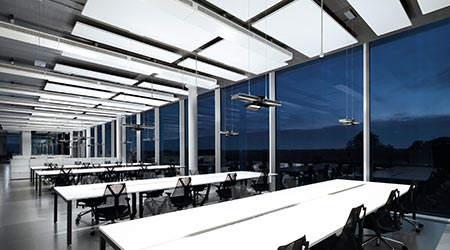
Smart Government Buildings: Q&A With GSA’s Director of Facilities Technology, Peter Pierpont
February 6, 2017
As supplement to Building Operating Management’s February 2017 cover story about GSA’s sustainable successes, Peter Pierpont, GSA’s director of facility technologies, ansewered a few questions about smart building technology, the building internet of things, analytics, and the organization’s GSAlink program.
What do you see as the most difficult challenges in implementing smart building technology and analytics in existing buildings?
It is always about people. You can’t just drop a plan out of the sky onto thousands of staff and many tens of thousands of occupants. We developed a thorough strategy, architecture and execution plan we also incorporated new training curricula, regional support experts and new workflow. Nevertheless, we must include other measures beyond just energy and operational savings such as employee and customer experience, career advancement and productivity. There were still times where we assumed too much and had to reset and better respect the learning curves.
From a technical standpoint there have also been challenges trying to “unlock” the proprietary systems such as HVAC and lighting controls to get the data. We were able to do this by adding special software called “middleware”. Going forward GSA has implemented policy that requires open systems (protocols) that ensures easier access to data and more flexibility for interoperability between systems as well as more leverage on service options over the life of the systems.
How do you (can you?) measure a building’s “smartness”/intelligence? Does GSA try, or is it a case where if advanced metering has been installed, it’s smart?
Smart is really more about the technology principles you need to adhere to today and for the future. Fundamentally, it is about collecting, analyzing and operationalizing data in the building(s). So, it is very “smart” to have visibility with continuous and even real time access to data (both manual and automated) that allow informed decisions related to building operations. Smart meters are a great example of where we are able to see immediately what the energy usage is and identify/react to irregularities. We have gone even further by getting data from our building management systems, lighting, indoor air quality and more. We are on a “smart” path of building operations, which prioritizes accurate data collection which allows potent decision making.
How does GSAlink work to leverage the building Internet of Things? In general, what do you see as IoT’s primary advantages for buildings?
The Building Internet of Things (BIoT) is in the same vein as the broader IoT. There are an increasing number of systems, sensors and devices flooding into our buildings. This requires a new approach and new infrastructure to keep pace with the cyber issues, data acquisition, analysis and even basic functionality. GSAlink was designed with the IoT in mind so that we have a process and system requirements to produce, capture and analyze many different types of data.
This is not only forward looking but very much about current day building technology. You have to keep up with BIoT to continue to ensure comfort, productivity and the overall occupant safety and experience.
How would judge the effectiveness of GSAlink overall in reducing energy and contributing to other sustainability initiatives? What improvements do you plan undertake?
There have been demonstrable savings in energy, operational savings and avoided capital costs. We have found through data analysis that it is not so much one approach being better than the other but certain combinations of programs (such as advanced meters and GSAlink) that have exponential benefits and a higher ceiling than those programs as stand alone. As noted earlier, we have an approach that is about data driven decision making of which GSAlink is the foundation. GSAlink helps to validate the use of sustainable technologies, equipment and products. Improvements to GSAlink may include further integration with GSA’s national CMMS, collection of indoor environmental quality (IEQ) data points as well closer integration with the advanced metering program.
How can (do?) smart buildings promote occupant wellbeing and satisfaction at GSA buildings?
There are significant benefits to having a data driven approach. As mentioned above, we are incorporating indoor environmental quality (IEQ) sensor inputs into GSAlink in an effort to focus on occupant comfort. Then we can have both manual and automated responses to the data including lighting, temperature and humidity adjustments. This directly relates to both health and productivity, which is a tenant satisfaction driver. GSAlink also allows the building operators to be proactive in dealing with maintenance issues. This allows the facility managers to make operational corrections before it impacts the tenants. The upcoming integration of GSAlink with the GSA national CMMS will further enhance our ability to track the correlation of building operations to tenant satisfaction.
This Quick Read was submitted by Greg Zimmerman, Editor of Building Operating Management, greg.zimmerman@tradepressmedia.com. Read his cover story about GSA’s sustainable success in five key areas.
Next
Read next on FacilitiesNet












